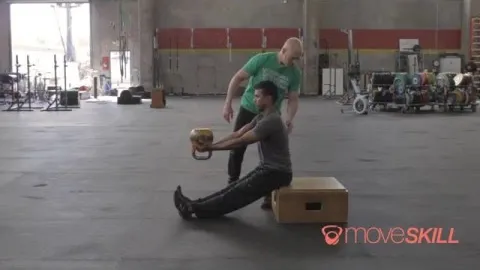Weighted Hamstring Stretch: A Complete Guide
The weighted hamstring stretch is an effective exercise that targets the muscles located in the back of your thighs, known as the hamstrings. This exercise is beneficial in improving flexibility, increasing range of motion, and preventing injuries. In this comprehensive guide, we will walk you through the proper technique, benefits, precautions, variations, and tips for performing the weighted hamstring stretch.
Technique:
To perform the weighted hamstring stretch, follow these steps:
- Begin by securing a resistance band around a sturdy stationary object, such as a pole or hook, at hip height.
- Stand facing away from the anchor point and place one foot through the resistance band, securing it around your ankle.
- Position yourself with a slight lean forward and keep your legs straight, maintaining a neutral posture with your shoulders squared and your back straight.
- Slowly hinge at the hips while keeping your spine in a neutral position. Allow the resistance band to pull your leg backward, gradually stretching your hamstring.
- Hold the stretch for 20 to 30 seconds, feeling a moderate tension in the hamstring.
- Return to the starting position and repeat the stretch on the other leg.
It is important to note that the weighted hamstring stretch should be performed with caution and control. Do not rush through the movement and avoid bouncing or jerking motions, as this can lead to injury.
Benefits:
- Enhanced Flexibility: The weighted hamstring stretch helps improve the flexibility of your hamstrings, allowing for a greater range of motion in your lower body.
- Increased Muscle Length: Regularly performing this exercise can help lengthen the hamstrings, reducing muscle tightness and promoting better posture.
- Injury Prevention: Strong and flexible hamstrings can assist in preventing common injuries, such as strains or tears, especially during activities that involve explosive movements or rapid changes in direction.
- Improved Athletic Performance: Flexible hamstrings are essential for performing various sports movements effectively, such as running, jumping, and kicking.
- Reduced Lower Back Pain: Tight hamstrings can contribute to lower back pain. Stretching these muscles may help alleviate tension and discomfort in the lower back.
- Better Posture: Hamstring flexibility is crucial for maintaining proper alignment of the pelvis and spine, which promotes good posture.
Precautions:
While the weighted hamstring stretch is generally safe, there are a few precautions to keep in mind:
- Start with a Light Resistance: Beginners should begin with a light resistance band and gradually increase the intensity as they build strength and flexibility.
- Listen to Your Body: Pay attention to any discomfort or pain during the stretch. If you experience sharp pain or excessive pulling, release the stretch immediately.
- Avoid Overstretching: Stretch only to the point of mild tension. Overstretching can lead to muscle strains or other injuries.
- Consult a Professional: If you have any pre-existing medical conditions or concerns, it is advisable to consult with a healthcare professional or a qualified fitness instructor before attempting this exercise.
Variations:
The weighted hamstring stretch can be modified to suit different fitness levels or preferences:
- Standing Hamstring Stretch: This variation can be done without using a resistance band. Stand upright with one foot in front of the other, keeping both legs straight. Bend forward from the hips, aiming to touch your toes. Hold the position for 20 to 30 seconds and repeat on the other side.
- Seated Hamstring Stretch: Sit on the floor with your legs extended in front of you. Bend forward from the hips, reaching for your toes. Hold the stretch for 20 to 30 seconds.
- PNF Stretch: Proprioceptive Neuromuscular Facilitation (PNF) stretching involves a combination of contraction and relaxation techniques. To perform a PNF stretch for the hamstrings, start in the standard weighted hamstring stretch position. After holding the passive stretch for 20 to 30 seconds, contract your hamstrings by pushing your leg into the resistance band for a few seconds, then relax and deepen the stretch further.
Tips:
To make the most of your weighted hamstring stretch, follow these tips:
- Warm Up: Before performing any stretching exercises, warm up your muscles with light cardio activity for approximately 5 to 10 minutes.
- Maintain Proper Form: Keep your back straight and avoid rounding your shoulders during the stretch. This will help target the hamstrings effectively.
- Breathe and Relax: Take slow, deep breaths throughout the stretch to promote relaxation and deeper stretching.
- Gradually Increase Intensity: As your flexibility improves, gradually increase the resistance or range of motion to continue progressing.
- Stretch Regularly: Consistency is key. Aim to stretch your hamstrings at least two to three times a week to experience lasting flexibility improvements.
- Always Cool Down: After completing the weighted hamstring stretch, cool down by performing gentle dynamic stretches or walking to bring your heart rate gradually back to normal.
Incorporating the weighted hamstring stretch into your fitness routine can offer numerous benefits in terms of flexibility, injury prevention, and improved athletic performance. Remember to start slowly and listen to your body throughout the exercise. Over time, with consistency and proper technique, you will experience increased mobility and reduced muscle tightness in your hamstrings.
